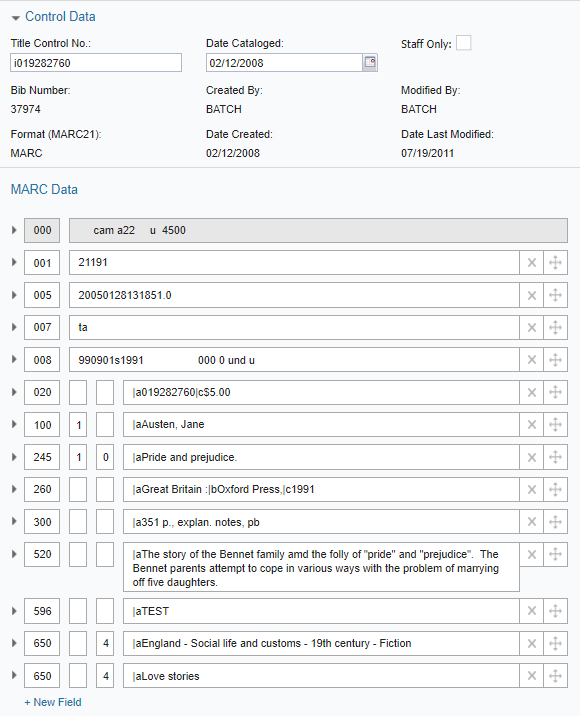When thinking about adding materials to the library collection, there are two ways items will be added to your catalog for circulation:
New librarians unfamiliar with the cataloging process can read this blog post Basic Library Procedures: Processing Library Materials to get a better understanding of the steps and materials needed to catalog items in-house. While some of the procedures may not be applicable to your situation, this provides a foundation for processing new library materials. To learn more about how to catalog using library automation software, contact your ITC Library Support Staff if you currently use INFOhio's LSP.
Watch this video from Chippewa Falls Public Library to learn more about the finishing steps of processing books so they are ready to circulate. Many of the materials highlighted in this video are available from vendors mentioned later in this lesson.
Importing Records
Library service platforms, like Workflows and BLUEcloud, allow library staff to catalog by importing MARC records from databases like the INFOhio Catalog, Library of Congress, OCLC/WorldCat, and BLUEcloud MARC. Importing a record gives the bibliographic information for an item. The picture above represents the bibliographic information in the form of a MARC record. Once that record has been imported into your LSP, you then can edit that record to meet the library's cataloging guidelines. Importing a record for an item requires creating and assigning a call number, as well as a barcode. If you are using INFOhio's LSP, check out this class called Introduction to Cataloging to learn more about the steps necessary to catalog an item.

Copy Cataloging or Original Cataloging
As a new librarian, most of what you do will be Copy Cataloging. This means creating new items based on records already created, whether from a MARC record database like the INFOhio Catalog or based on a record already cataloged in the district.
Another option available is Original Cataloging. This means creating a MARC record using tags and subfields as available in the Library of Congress's MARC Standards. INFOhio has some cataloging templates available for guidance. Original Cataloging can be used for items that do not have MARC records available such as locally published materials, yearbooks, and devices. Before choosing original cataloging, make sure that there isn't a record available that could be used. Check the templates available in INFOhio's Template database, and ask your ITC Library Support Staff for help if needed.
Quality Control – Pros and Cons
Before deciding to catalog items in-house or to purchase items through a vendor, consider the pros and cons of each situation. The right answer may be a combination of the two.
Benefits of cataloging yourself include:
Benefits of purchasing cataloging through a vendor include:
Regardless of the method chosen, your ITC Library Support Staff is always there to help. Be sure to reach out to them and discuss your situation.
Discounts on Cataloging Supplies - Saving You Money
If you choose to catalog items in-house, there are few items to purchase so items are circulation-ready. These include:
Not all of these cataloging supplies will be right for your library, but it will be helpful to familiarize yourself with the supplies. If planning to catalog any items in-house, label stock for barcodes and spine labels and label protectors should be ordered to circulate those times. When purchasing cataloging supplies, don't forget about the available discounts from OhioNet for supplies from vendors like Demco, Kapco, and Staples. Please see this INFOhio blog post for more information.
Fetch is avaiable to INFOhio automated schools. If you are an INFOhio school, please log in with your school username/password using the button at the top-left corner of this page.
For more information about Fetch, please visit the Fetch information page or contact INFOhio support at https://support.infohio.org.